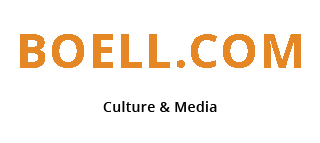Who is your core audience ?
In the incredible amount of chatter, running through the digital airwaves, it is always good to pause and ask, why do I write these lines?. Are these lines important enough to share with the world? But then , who is “the world”?
It is an illusion to assume, that “the world” is reading my lines. Even with thousands of followers or fans, every message-sender will only receive a small percentage of views, likes or shares — and then, did the content really matter?
There are many tips, tools and methods to enhance your social output. One of them reads, to publish many times per day and I wonder, if this really enhances the user experience. For my part, I unsubscribe from pages or twitter accounts, who constantly (and most of the time automatically) send tons of content my way, so it totally blocks my news-stream. It annoys me and is dis-respectful to my limited time and attention, I have to share with the social media in general – but especially when I use it as a news source or I am hunting for interesting content.
I prefer regularly and frequent updates, but in a “human” amount, more like snacks, which I can easily digest throughout the day (and night). Should I stumble across interesting teasers (which in essence many twitter messages are), I will take the time to look and even continue to read “the full article”, if it is really on top of my interest. Then I can use my social media channels to like or plus it, to share with …., yes with who actually do I share my findings?
I agree with (film) composer and musician Deane Ogden, who underlines the importance of knowing one´s core audience in his straight written piece “Your wilderness matters“.
But this is not only important for artists, but also for every social media user. In business, it is one fundamental requirement: to know ones “target group”. Who do I want to reach and for what purpose? A “key customer” is nothing less than at the core of my target group.
It is always astonishing, how many organizations do not know how to answer these questions. Instead, communications channels are used often just to promote one´s own brand, product, company – in a broadcast style, thinking, that it will be enough just “to put the information out there”.
Whoever is one step further and targets specific messages to an assumed target group, will even more often believe
that the amount of followers is correlating to the amount of action generated (for example: buy a product, visit a web site, download content, etc.). This is wrong, because the core-ness of the audience is actually more important.
“If you are a composer and you have a Facebook list full of fellow composers, but only two or three directors or music supervisors, are you really playing to your core? You might be a recording artist with an army of Twitter followers who are also incredible recording artists and musicians. But where are all your fans? Where are the people buying your downloads in iTunes? Are you really playing to your core?” (Deane Ogden)
So, as I said in the beginning – sometimes it is good to pause for a moment and to re-evaluate, if you are in fact sending messages to the type of audience, you really want to reach. And then, the next question comes to mind:
Which channel are you going to use for what type of communication ?
